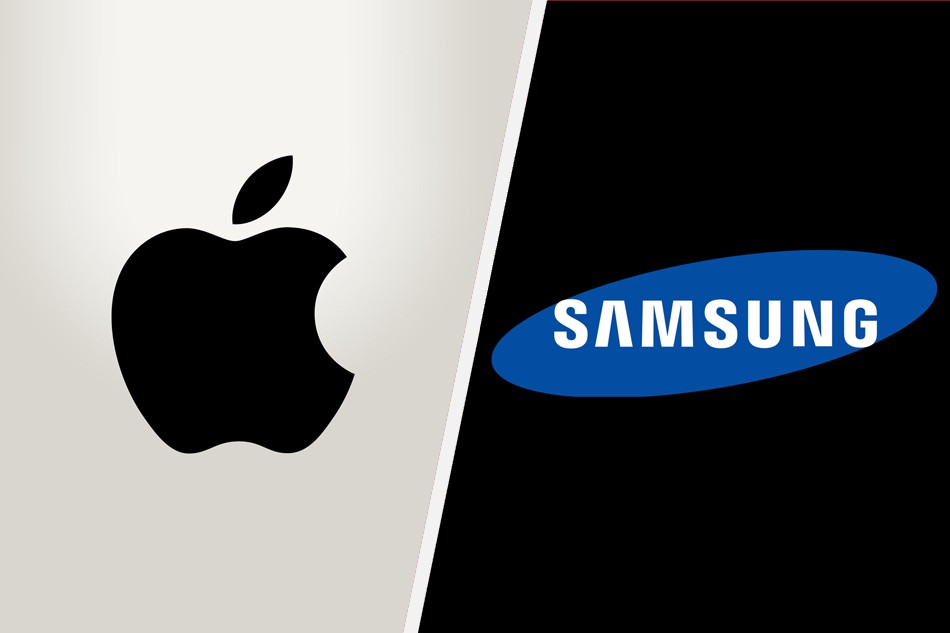Have you ever wondered how big brands and companies that we come across in our households every day started? Have you stopped and paused to think about what they struggled through from being a start-up company to become a household name and then you start wondering what chances they took, business strategy examples they made use of, and even thinking of implementing it to your own business or company one day? But what exactly is a Business Growth Strategy and why do businesses need to care about these kinds of strategies in the long run?
Every business is faced with a lot of competitors. No matter what kind of business you have and in what sector of the economy, your business will always face competitors, some already having been established well before your own business, and with some already having faithful brand consumers, you will need to be able to ensure that your business will manage to not only stay afloat amidst all the competition, but also to be able to catch up, and stay ahead of them while conducting your everyday business.
Furthermore, statistics show that 20% of businesses fail in the first two years of being open. 45% in the first five years of being open, and 65% of them fail in 10 years. This shows that growth is fundamental to any business’ life and survival, and it is important that from day one, there already is a growth plan.

What happens when you do not have one? Your business will be at the mercy of market fluctuations and a fickle consumer base. Remember that without one, a business cannot reach a plateau easily. Studies have shown that businesses that have suddenly improved even if their business was considered near their deathbeds, there was one thing that always saved them: changing or implementing a proper and appropriate business growth strategy.
Businesses’ Growth strategies vary from one business to another, and this is because of various marketing factors that may or may not affect a certain business. But among these strategies, there are top 7 business strategy examples that are commonly used by businesses, here they are:
7 Commonly Used Business Growth Strategies
1. MARKET PENETRATION
Market penetration is something that can be defined into two: Marketing Penetration as a measurement or as an activity. In this article, we will be focusing on Marketing Penetration as an activity, but for educational purposes, let’s touch on market penetration as a measurement.
Marketing penetration as a measurement is defined as the assessment or rate of just how much a product is being sold in a current market relative to the total estimate of the market for that product, and is expressed as a percentage. This measurement is commonly known as the market penetration rate.
Marketing penetration as an activity is the process of launching or releasing a product in an already existing market that has the same or similar products. This process aims to take away market shares from other competitors that have already established markets. This business strategy example is used more commonly because it has lower risks compared to other business growth strategies.
This is for the reason that penetrating a market that already exists ensures that there is a demand and a need in the market for the product. However, even if it is one of the business growth strategies that have lower risks, a business applying this strategy needs to have a strong implementation, execution, and application of their marketing penetration strategy.

Vivo, a new smartphone company brand, entered Australia two years ago back in 2019. With a lot of smartphone companies available in the country, Vivo was able to penetrate the Australian market with two flagship phones back then. This is an example of a market penetration strategy because Vivo as a brand dates back to 2009. Their market penetration strategy led them to become part of the smartphone market that even until today in the middle of a pandemic, is a steady and stable market.
2. MARKET DEVELOPMENT
The next business growth strategy is Market Development. Market Development Strategy comes into play when a business already has a product in an existing market and they start to introduce that product to other markets that may need it.
This also includes introducing the existing product to a new region, or even other places internationally. Usually, it is bigger and already established companies use this growth strategy because they have the options and resources to introduce and develop their existing product elsewhere. But this doesn’t go so far as to say that small businesses can’t do a market development strategy.
For small businesses, market development would involve entering into new market segments of markets they are already in. For example, restaurants that only offer their regular restaurant items can choose to offer catering services or private events. This is an example of a marketing development strategy.

McDonald’s as a giant company is global. And this US Company is strong as a brand throughout Australia and in various parts of the world. But has this always been the case? McDonald’s was not always that big and the number one fast-food chain all over the world. Through their continuous Market Development strategy, they were able to offer their already existing menu from the US to all over the world. True it is a mix of market penetration and market development because they also adjust with various menus in different countries around the world.
McDonald’s is one of the best examples of the best and successful Market Development Strategy in the world.
3. PRODUCT DEVELOPMENT / DIVERSIFICATION
While a marketing development strategy lands at the top 2 of this list, the Product Development / Diversification Strategy is not long from it. This business growth strategy is when a company or a business improves an existing product of theirs to grow their market, aiming to include markets that have not yet been interested in their certain product. The main difference between a Market Development Strategy with a Product Development Strategy is that the focus of the latter one is on developing an existing product to gain a new market compared to introducing an already existing product as is to a new market.
Usually, new features are added to an existing product, and this aids in this business growth strategy, and oftentimes, this strategy works well when technology starts to evolve. With each improvement of an existing product, product development/diversification is present.
This business strategy example however is riskier and relies heavily on consumer and market research to ensure that the product is desirable, feasible, and viable.

The greatest example of this is what both Apple and Samsung do to their current flagship phones. While each phone bracket has its markets, their flagship phones cater to a certain market that follows them as well. Headlines for when a certain Apple or Samsung flagship phone was released back when the COVID pandemic had not happened yet were all of the people falling in line outside Apple or Samsung stores, and not only that but also online sales were always big and continuous. The product development/diversification strategy that these two giants are continuously applying is present whenever they release a new set of not only flagship phones but other phone lines that serve other markets as well.
4. ACQUISITION
Acquisition refers to acquisitions of a company by another company. An acquisition can either be a merger or taking over total control of the acquired company. Usually, an acquisition aims to secure employees, ensure a greater investment and profit for the company, and consolidate both of the companies’ market forces.
In an acquisition, a bigger company acquires the smaller company, and the purchase of shares, management, and even control is handed over to the acquiring company. The sole objective of an acquisition when done for the sake of business growth is to gain market shares, this means that the acquiring company acquires greater resources from the acquired company which in turn ensures a business expansion.
This business strategy example requires analysis and study for the acquisition to be successful. A company will not need a company with the same resources as it has and has a similar reach as it has, and this is the reason why the acquisition isn’t something easy to do. It may incur losses and even ultimately fail to add to the acquiring company’s total assets. A company acquiring must know exactly what its corporate goal is to be able to decide on the most effective way this business growth strategy can be implemented.
One of the most talked-about acquisitions in this century is Disney’s acquisition of 20th Century Fox, adding this company to the roster of companies who are under the Disney Franchises, namely: Pixar, Lucas film, and Marvel. This meant that Disney acquired all the assets under these companies, making them able to use their licensed characters and films as Disney would like, ensuring the company’s growth in terms of their overall reach in various aspects of the film industry.
5. MARKET SEGMENTATION
This is an example of business strategy that is most commonly used by businesses both big and small. Simply put, market segmentation is when a business divides its markets into various groups which are often called segments, usually according to various consumer or market characteristics that affect them. These characteristics may include interests, preferences, locations, similarities, and other similar factors.
This business growth strategy is typically used in companies or businesses that are product-based, banks, clothing stores, and even media outlets. What this would entail for the business or the company is that there is a range of both products and services that your company can and may offer that can benefit its market reach in total.
However, this example of business strategy is something that needs to be focused on a lot more as there are various ways to interpret the data taken from various segments, and most of the time, the solution would be to reduce the complexity of the market segments that you cater to.
Companies looking to use this strategy for their business growth must ensure that their marketing managers can well interpret the data that will be collected and be able to know what next to offer their segments.
6. PARTNERSHIPS
Different from acquisition, a partnership is the joining of forces of two (or more) businesses or companies to grow. This business strategy example works well, provided that the partnership arrangement would bring significant results and benefits to all parties or businesses involved. This way, it will truly be a win-win situation for both.
The great thing about it is that partnerships can come in many forms. You can partner up to form a new product or service and the creativity starts from there. Businesses or companies can offer something new to each other’s consumers and markets which will and can cause a stir in both. Businesses will not only be able to gain access to a new customer market and base, but also gain extra resources in terms of and includes but are not limited to skill sets, manpower, equipment, knowledge, stocks, and technology,
Partnerships happen when there is a need to inject new and vibrant life into the business when it hits a flat line state with its products or services and believe it or not, this business growth strategy works on whatever market or industry you are in. But keep in mind that there is no similar business strategy or plans when it comes to partnerships. With this business growth strategy, creativity is key.

Uniqlo, the Japanese clothing brand that has set up shop in almost every continent around the world, has a unique partnership strategy. They partner up with artists, animation offices, game companies, and even companies like Disney to release licensed products now and then. With their simple is a key take on fashion, the designs that they can make with their clothes and their partner companies have always been successful, targeting not only Uniqlo loyal consumers but also the markets of the various companies they are in partnership with for their clothing line. What makes this partnership special as well is that they are only limited for a certain time and a certain amount, guaranteeing that the next partnership strategy, even if with the same company, has a different outcome.
7. ALTERNATIVE CHANNELS
This business growth strategy, while it has always been present, has never been highlighted more than how it is highlighted today. Because of the current pandemic, businesses have had to find various alternative ways to conduct, market, and go about their regular business.
Commonly today, the most used alternative channel is through the online platform, using various Social Media and business platforms alike. And this business growth strategy has become a need more than a luxury or an option, as to what it was before. Physical stores and offices closed down, and while most are open again today, the world will never be the same, as suddenly businesses found that their everyday routines can also be performed alternatively, and thus, the era that we left behind pre-COVID, will never come back, knowing that there are better, alternative channels to conduct various businesses.
What the most intriguing thing about this last business growth strategy is that it is small businesses with quality products that benefit from it, better than big company ones. Because most online transactions are done on Social Media platforms, people have access to areas and businesses that they could have never had dreamed of accessing before, which makes small businesses be able to reach out to about the same amount of people that a large business or company could.
These 7 examples of powerful business growth strategies have and are still currently aiding and helping businesses, small and big alike, are growing. But a business must always remember that knowing what business growth strategy to use is only the beginning. After it comes to a rigorous path of research and planning, they are faced with the hurdle of implementing it. Once they pass that hurdle, then the hardest part of the course remains: maintaining it. With all the examples of famous companies that were able to make it using these business growth strategies, there is one similar thing that they all have in common: It is that they are continually using their business growth strategy.
Being able to know, plan well, implement, and continue with a business growth strategy would make any business successful. Now, look at everything around you again. Some brands you would recognize to be household names all over Australia, remember to keep in mind that they too were once start-ups that at one point in the life span of the company or business, they were able to successfully implement a business growth strategy. There should always be one thing that business owners need to have in mind: It’s that if the others can do it, then so can they.
NEED FUNDING FOR YOUR BUSINESS? GET A FREE QUOTE TODAY AND GET FUNDED!
CLICK HERE TO GET A FREE QUOTE
Share this article

